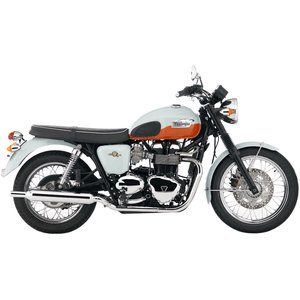Triumph Bonneville T100 (2009–2016): A Timeless Dance Between Heritage and Modernity
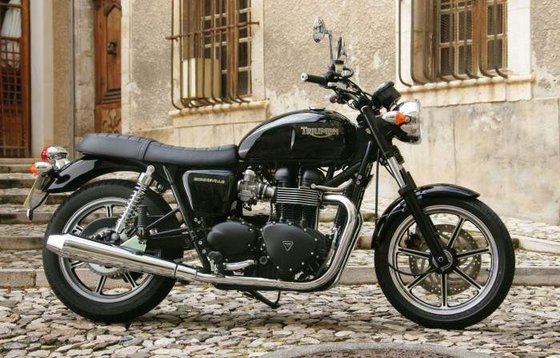
Introduction
The Triumph Bonneville T100 isn’t just a motorcycle—it’s a rolling monument to rebellion, freedom, and the unbreakable spirit of classic motorcycling. From 2009 to 2016, this modern reinterpretation of the 1960s icon carved its niche as a bridge between nostalgia and innovation. With its air-cooled parallel twin, retro styling, and accessible performance, the T100 became a favorite among riders who craved authenticity without sacrificing reliability. After a day in the saddle of a well-preserved 2013 model, it’s clear why this machine remains a benchmark in the classic motorcycle segment.
Design & Styling: A Love Letter to the 1960s
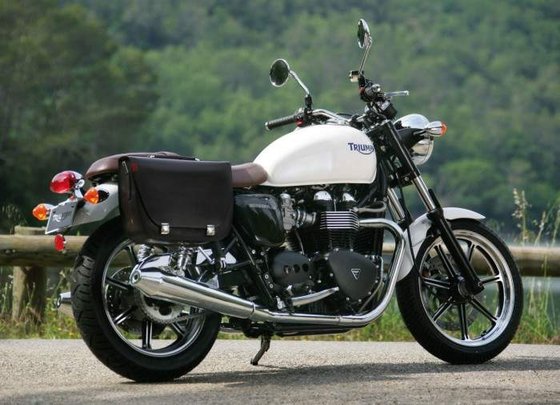
Slip into the T100’s presence, and you’re immediately transported to the golden age of British motorcycling. Triumph’s designers nailed the retro aesthetic with hand-painted two-tone fuel tanks (options like Forest Green/New England White or Cranberry Red/Phantom Black), chromed peashooter exhausts, and rubber fork gaiters. The 19-inch front and 17-inch rear spoked wheels (on the T100) pay homage to the original, while the cast alloy wheels on base Bonneville models add a subtle modern twist.
The attention to detail is exquisite: dummy carburetors disguise fuel injectors, brushed engine covers mimic vintage finishes, and the solo seat with embossed Triumph logos completes the illusion of a time machine. Special editions like the Steve McQueen Edition (matte khaki green, solo seat, blacked-out components) or the 50th Anniversary model (Meriden Blue/Exotic Orange) elevate the T100 into collectible territory. At a café stop, expect envious glances—and questions about whether it’s a restored classic.
Engine & Performance: The Heartbeat of a Legend
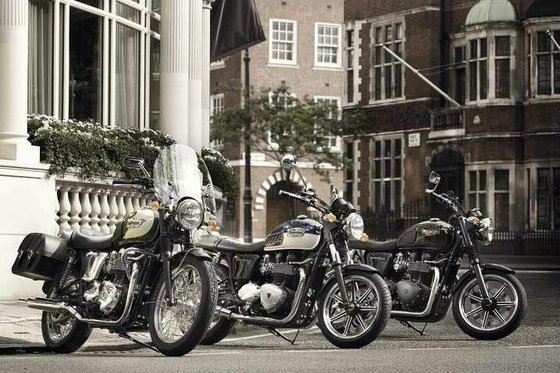
Fire up the 865cc parallel twin, and the engine settles into a throaty idle that’s more symphony than noise. With 67 hp (50 kW) at 7,500 rpm and 51 ft-lbs (69 Nm) of torque peaking at 5,800 rpm, this isn’t a tire-shredder—it’s a storyteller. The 360-degree firing order delivers that signature loping rhythm, while fuel injection (introduced in 2008) ensures crisp throttle response without the fuss of carburetors.
Acceleration is linear, with torque available as low as 2,500 rpm. Cruising at 60 mph (97 km/h) in fifth gear feels effortless, the engine humming at 4,000 rpm. Push it to the 7,500 rpm redline, and the T100 rewards with a surge that’s more enthusiastic than explosive. The 5-speed transmission shifts with a satisfying mechanical click, though the cable-actuated clutch could feel heavy in stop-and-go traffic.
Fuel efficiency hovers around 50 mpg (4.7 L/100 km), translating to a 160-mile (257 km) range from the 4.2-gallon (16 L) tank. It’s a practical companion for weekend rides or daily commutes—provided you don’t mind the lack of wind protection.
Handling & Ride Experience: Grace Meets Agility
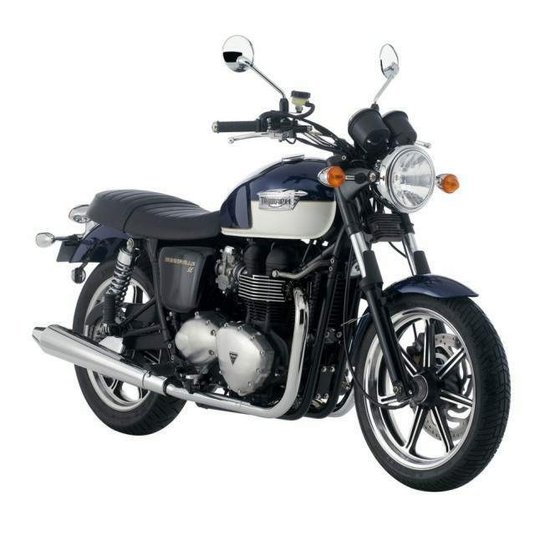
Weighing in at 496 lbs (225 kg) wet, the T100 isn’t featherweight, but its low center of gravity and 30.5-inch (775 mm) seat height make it shockingly manageable. The tubular steel cradle frame and 41mm Kayaba forks strike a balance between stability and flickability. On winding backroads, the T100 leans into corners with a planted confidence, the narrow 100/90-19 front tire offering precise feedback.
The suspension, however, reveals its budget origins. The non-adjustable forks and preload-only rear shocks struggle with sharp bumps, sending jolts through the chassis on rough pavement. Upgrading to aftermarket shocks (like YSS or Hagon) transforms the ride—a worthwhile investment for serious riders.
Braking is adequate but not thrilling. The single 310mm front disc with Nissin 2-piston calipers provides decent stopping power, though spirited riding exposes its limits. Consider swapping to sintered pads for improved bite.
Competition: How the T100 Stacks Up

In the classic retro segment, the T100 faces fierce rivals:
- Harley-Davidson Sportster 883:
- Pros: Louder V-twin character, stronger aftermarket support.
- Cons: Heavier (564 lbs), less agile, higher seat height.
-
Verdict: The Sportster appeals to die-hard cruiser fans, but the T100 offers better balance and nostalgia.
-
Moto Guzzi V7 III:
- Pros: Unique transverse V-twin, lighter (416 lbs), shaft drive.
- Cons: Less power (52 hp), polarizing design.
-
Verdict: The V7 is a charming oddball, but the T100’s heritage and parts availability win for most.
-
Kawasaki W800:
- Pros: Smooth 773cc parallel twin, retro bevel-driven cam.
- Cons: Softer suspension, less torque.
- Verdict: The W800 is a worthy rival, but the T100’s larger engine and styling edge it out.
The T100’s trump card? Customization. From café racer kits to scrambler exhausts, it’s a blank canvas—one that MOTOPARTS.store excels at equipping.
Maintenance: Keeping the Legend Alive
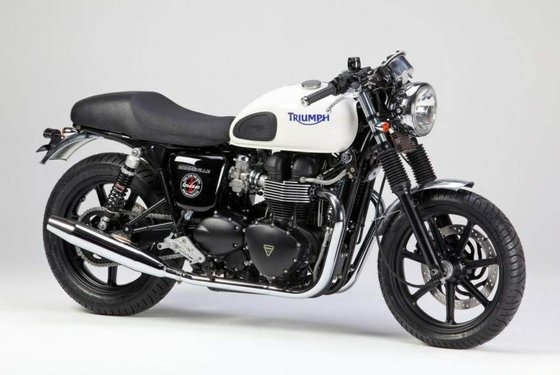
Ownership is refreshingly straightforward:
- Oil Changes: Every 6,000 miles (9,656 km) with 15W/50 synthetic.
- Valve Adjustments: Every 12,000 miles (19,312 km)—shim-under-bucket design requires mechanical skill.
- Chain Care: O-ring chain needs regular cleaning and lubrication (we recommend MOTOPARTS.store’s premium chain kits).
Common upgrades include:
- Exhaust Systems: Swap the stock mufflers for Arrow 2-into-1 headers (60% lighter, richer sound).
- Suspension: YSS shocks improve ride quality without breaking the bank.
- Seats: The stock saddle suits short rides; opt for a gel seat for touring.
Watch for minor oil leaks from the cam cover gaskets and corrosion on chrome parts—both easily addressed with MOTOPARTS.store’s maintenance kits.
Conclusion: The Eternal Classic

The 2009–2016 Bonneville T100 isn’t about chasing specsheets. It’s about the joy of riding a machine that feels alive—a machine that connects you to motorcycling’s rebellious past while embracing modern reliability. Whether you’re threading through city traffic or carving backroads, the T100 delivers a smile-per-mile ratio that few bikes can match.
For owners, MOTOPARTS.store stands ready to elevate your T100 with performance upgrades, vintage accessories, and OEM-quality replacements. Because every Bonneville deserves to age as gracefully as its legacy.
Ride timelessly.











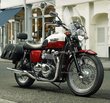

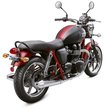
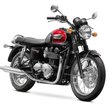














Specifications sheet
| Engine | |
|---|---|
| Stroke: | Four-stroke |
| Max power: | 50 kW | 67.0 hp |
| Max torque: | 69 Nm |
| Fuel system: | Multipoint Sequential Fuel Injection |
| Lubrication: | Wet sump |
| Max power @: | 7500 rpm |
| Displacement: | 865 ccm |
| Max torque @: | 5800 rpm |
| Configuration: | Inline |
| Cooling system: | Air-cooled |
| Compression ratio: | 9.2:1 |
| Number of cylinders: | 2 |
| Dimensions | |
|---|---|
| Wheelbase: | 1500 mm (59.1 in) |
| Dry weight: | 205 |
| Wet weight: | 226 |
| Seat height: | 775 mm (30.5 in) |
| Overall width: | 840 mm (33.1 in) |
| Overall height: | 1100 mm (43.3 in) |
| Overall length: | 2230 mm (87.8 in) |
| Ground clearance: | 165 mm (6.5 in) |
| Fuel tank capacity: | 16.6 L (4.4 US gal) |
| Drivetrain | |
|---|---|
| Chain type: | X-ring |
| Final drive: | chain |
| Chain length: | 104 |
| Transmission: | 5-speed, wet multi-plate clutch |
| Rear sprocket: | 43 |
| Front sprocket: | 18 |
| Maintenance | |
|---|---|
| Rear tire: | 130/80-17 |
| Engine oil: | 15W50 |
| Front tire: | 100/90-19 |
| Brake fluid: | DOT 4 |
| Spark plugs: | NGK DPR8EA-9 or NGK DPR8EIX-9 |
| Spark plug gap: | 0.9 |
| Forks oil capacity: | 0.97 |
| Chain specification: | 525 pitch, 104 links |
| Engine oil capacity: | 3.8 |
| Sprocket combination: | 18T (front)/43T (rear) |
| Engine oil change interval: | Every 6000 km or 2 years |
| Valve clearance (intake, cold): | 0.10–0.20 mm |
| Valve clearance check interval: | 24,000 km / 15,000 mi |
| Valve clearance (exhaust, cold): | 0.20–0.30 mm |
| Recommended tire pressure (rear): | 2.5 bar (36 psi) solo, 2.8 bar (41 psi) with passenger |
| Recommended tire pressure (front): | 2.3 bar (33 psi) |
| Additional Features | |
|---|---|
| Instruments: | Analog speedometer and tachometer |
| Fuel efficiency: | 4.1-4.7 L/100 km (57-50 US mpg) |
| ABS availability: | Not equipped (as per 2009-2016 generation data) |
| Wheels (standard): | 36-spoke (19" front, 17" rear) |
| Chassis and Suspension | |
|---|---|
| Rake: | 28° |
| Frame: | Tubular steel cradle |
| Trail: | 110 mm (4.3 in) |
| Rear brakes: | Single 255 mm disc, 2-piston Nissin floating calipers |
| Front brakes: | Single 310 mm disc, 2-piston Nissin floating calipers |
| Rear suspension: | Kayaba twin shocks with adjustable preload (106 mm travel) |
| Front suspension: | 41mm Kayaba telescopic forks (120 mm travel) |



